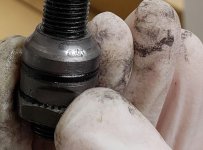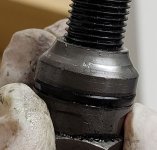Wear on cassettes is pretty simple, if it skips replace it. If teeth are broken off, refer to "does it skip". If there's wear marks, refer to "does it skip". Cassettes see some pretty extreme wear, as long as the chain doesn't jump off when it's all adjusted correctly you're fine.
As for getting that last cog off by a notch, it happens to all of us. As long as you notice the issue and correct it, it's all good.
As for getting that last cog off by a notch, it happens to all of us. As long as you notice the issue and correct it, it's all good.



 3x7 with garbage Tourney FD and Altus RD which is ok. Has mechanical disc brakes which are nice for street riding.
3x7 with garbage Tourney FD and Altus RD which is ok. Has mechanical disc brakes which are nice for street riding.

